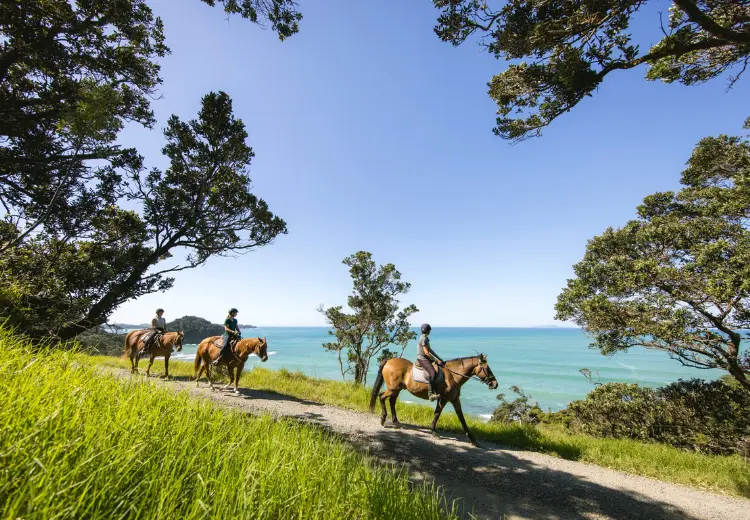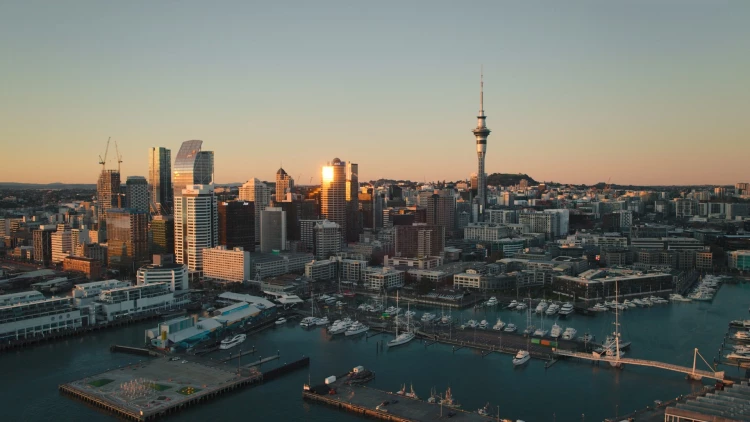- About Health New Zealand
- Locations
- Allied Health
- Midwifery & Nursing
-
Medical Officers
- All Senior Medical Officers (SMOs)
- Anaesthetists
- Dermatologists
- Emergency Medicine Specialists
- GPs & Rural Hospital Doctors
- General Medicine
- Obstetricians & Gynaecologists
- Oncologists
- Paediatricians
- Pain Medicine Specialists
- Pathologists
- Psychiatrists
- Radiologists
- Surgical Specialities
- Resident Medical Officers (RMOs)
- Specialist Teams

General Practitioners & Rural Hospital Doctors
General Practitioners and Rural Hospital doctors are the first point of contact for most New Zealanders who have a health concern and 90 percent of medical problems are dealt with in a General Practice.
Also known as: Doctor, Family Doctor, Family Physician, Primary Care Physician
Photo location: Queenstown, Otago - Credit: Miles Holden
About the role
Our doctors are more than just an individual in a clinic. They become part of their communities’ wellbeing. With a diverse population of 5 million we need more GPs and rural hospital doctors.
You can see more of what New Zealand has to offer, in a role to suit the needs of you and your whānau (family). Be it small-town rural living or the bright lights of the city you’ll be in high demand wherever you choose to go.
If you’re interested in full-time, part-time or locum work. You choose your own working hours, to have a healthy work-life balance, make lasting connections with patients and work through complex yet rewarding challenges in one of the most beautiful places in the world.

New Zealand GP Workforce Statistics
-
64% work in GP-owned practices
-
58% identify as female
-
51% work full-time
-
38% are international medical graduates
-
48% of rural hospital doctors got their first medical degree overseas
Visa Pathways
As a GP, there are two major visa pathways to choose from:
1. New Zealand Residency (Recommended)
GPs are on Tier 1 of New Zealand's Green list, meaning that you can apply for a straight-to-residence visa for you and your family from offshore.
To be eligible to New Zealand's straight-to-residence pathway, you must:
- Be 55 years old or younger
- Have a job offer from an accredited employer
- Meet health and character requirements
- Meet English language requirements
This pathway allows your family to be part of your residency application, rather than needing to apply for separate visas for all family members. Having New Zealand residency also allows you to buy a home and qualifies you for employer-matched superannuation straight away. The job offer you get also isn't tied to your residency application, meaning you can move jobs more easily than if you were on a work visa.
2. Accredited Employer Work Visa (AEWV)
An AEWV is a 3-year work visa that is tied to a job offer, meaning you would need to change the conditions of the visa in order to move roles. Your family would also need to apply for separate work, education and visitor visas that are linked to your AEWV application.
To be eligible for an AEWV, you must:
- Have a job offer from an accredited employer
- Meet health and character requirements
- Provide proof that you are a bona fide applicant as per Immigration New Zealand's requirements
Registration information
In order to practice in New Zealand, you need to be registered with the Medical Council of New Zealand. Depending on your level of qualification, and what country this was obtained in, there are a number of different registration pathways to choose from:
Provisional general scope (competent authority)
This pathway is for doctors who have completed a primary medical degree and internship in the UK or Ireland. These doctors can apply for provisional general registration and work in any area of medicine and at any level, provided they have appropriate supervision. After 6 months of successfully working under supervision, they can apply for a general scope of practice.
Provisional general scope (comparable health system)
This is an experience-based pathway for doctors who have recent practice in one or more of the 24 countries the Medical Council of New Zealand recognises as having health systems comparable to New Zealand. These doctors need to have worked for at least 33 of the last 48 months in a comparable health system in a particular area of medicine. They must have a job offer in New Zealand in that same area of medicine and at the same level of appointment. Once granted provisional registration, these doctors must work under supervision for 12 months before they can apply for a full general scope of practice.
Provisional general (Australian general registrants)
This pathway is for IMGs in Australia who have passed a specific written exam and clinical exam – these exams are administered by the Australian Medical Council, successfully completed 12 months of supervised practice in Australia and hold a general scope with AHPRA. Once granted provisional general registration, these doctors must work under supervision for 12 months, before they can apply for a general scope of practice.
This pathway is for doctors who have completed a primary medical degree and internship in Australia (or New Zealand). If they’ve completed their 2-year internship, they do not need to work under supervision.
Special purpose scope (locum tenens)
This is a temporary form of registration that allows doctors who hold an approved overseas postgraduate medical qualification in general practice to work for up to 12 months in New Zealand. For general practice, our approved list of qualifications recognises postgraduate medical qualifications from Australia, Canada, Hong Kong, Ireland, the UK and the USA.
Applications submitted via the provisional general, general or special purpose scope pathways are processed within 20 working days of receipt of a complete application.
Doctors who have an overseas postgraduate medical qualification in general practice and who wish to be recognised as specialists in New Zealand can apply for assessment of eligibility for provisional vocational registration. Applications via this pathway generally take 4 to 6 months to process and 90% of applications received are processed within this service standard.
This application type takes longer to process as it involves an assessment of the applicant's training, qualifications and experience against the standard of a New Zealand vocationally-trained general practitioner holding FRNZCGP, which is undertaken by the Royal New Zealand College of General Practitioners.
The application process
GPs and Rural Hospital Doctors are not typically employed by Health New Zealand. We work with NZLocums and NZMedJobs, which are divisions of Hauora Taiwhenua Rural Health Network. They are experts in medical recruitment in New Zealand and placing GPs into roles across the country, in both rural and urban practices.


Looking to move to New Zealand to work as a GP or Rural Hospital Doctor?
Great news! Both are on Tier 1 of New Zealand's Green List which means you are eligible for a fast-tracked Straight to Residence Visa. This means you and your family can apply for New Zealand residency before you arrive, provided you have a job offer from an accredited employer, like us!
Explore Aotearoa
New Zealand - Aotearoa has been in the top 5 countries in the Global Peace Index every year since it launched in 2009 and has a broad range of places to call home, from the bustling metropolis of our main centres, to the easy-going vibe of our coastal or rural communities.
Find out more information about what part of our beautiful country is the best fit for you.

Te Tai Tokerau Northland
Population: 194,600
Northland is a beautiful and diverse region of Aotearoa, New Zealand with plenty to offer visitors. Whether you're interested in water sports, historic sites, natural beauty or ancient Kauri trees—Northland has it all!

Waitematā
Population: 650,000
Waitematā is the largest and one of the most rapidly growing Districts serving the largest population of all Health New Zealand. Waitematā offers a balanced lifestyle that combines the convenience of city living with the natural beauty and community spirit of suburban life.

Te Toka Tumai Auckland
Population: 500,000
Auckland the "City of Sails" is Aotearoa, New Zealand’s largest city and commercial hub. It’s where metropolitan sophistication meets breathtaking natural beauty. Auckland is filled with a variety of warm and welcoming communities, packed with new places to explore.

Counties Manukau
Population: 500,000
Counties Manukau is a vibrant place where there's never a dull moment! Living and working here ensures you're always close to amenities, events and nature. You'll never run out of places to visit or things to do.

Hauora a Toi Bay of Plenty
Population: 255,110
The Bay of Plenty is a place of beautiful harbours, long surf beaches and an easygoing lifestyle. We showcase the perfect place to explore a wide range of nature-based pursuits – this gives the people of the Bay of Plenty the chance for a better work-life balance.

Waikato
Population: 425,000
The Waikato region is known for its natural beauty, rich Māori culture, and agricultural heritage with something to offer visitors of all interests.

Tairāwhiti Gisborne
Population: 48,000
In family-friendly Tairāwhiti you will experience an easier pace to life that allows you to pause, reflect, and enjoy a true work-life balance. Gisborne’s relative isolation is its charm, surrounded by beaches & nature - don't worry though! Larger cities are only a quick flight away.

Lakes
Population: 110,000
The Lakes District is well known for its geothermal activity and natural hot springs. The area is located in the central North Island and is home to many geothermal attractions, such as geysers, hot mud pools, and steam vents. Visitors can also relax in the region's natural hot springs, which are believed to have healing properties.

Taranaki
Population: 130,000
Taranaki is a magical place with a majestic mountain at its heart, including the rugged coastline that's world-renowned for its surf. Its residents' love of art and culture, cafes and outdoor living mean it's also fantastic to work—and play!

Te Matau a Māui Hawke's Bay
Population: 180,000
Known for its world-class wineries, stunning beaches and temperate climate, Hawke’s Bay boasts a lifestyle that is unmatched. The region is a popular destination for food and wine tourism, hiking, cycling and cultural events such as the annual Art Deco festival.

Whanganui
Population: 65,000
Whanganui has something for everyone. Our centrally located region offers access to outdoor activities such as kayaking, skiing, surfing, tramping, cycling, fishing and hunting. Nestled between two snow-capped mountains, on the banks of Whanganui River there is always plenty to do and explore.

Capital, Coast and Hutt Valley
Population: 445,000
Wellington, the capital city of Aotearoa New Zealand, is a bustling and diverse hub of culture and cosmopolitanism, renowned for its lively cafés, restaurants, and internationally acclaimed sporting and cultural events, all set against the stunning backdrop of a natural harbour. To the north of Wellington lie the regions of Porirua, Kapiti, and Hutt Valley.

Te Pae Hauora o Ruahine o Tararua MidCentral
Population: 190,000
Get the best of both worlds - the perfect blend of rural and city living with the mountains, city and sea at your fingertips.

Wairarapa
Population: 48,000
From rugged coastlines, boutique vineyards to lush forests, Wairarapa is a slice of paradise for those who love the outdoors and seek a peaceful environment to recharge after a rewarding day's work.

Nelson Marlborough
Population: 150,000
Nelson Marlborough has been dubbed the artistic capital with a thriving urban centre and one of New Zealand's sunniest regions.

Te Tai o Poutini West Coast
Population: 32,000
Te Tai o Poutini/West Coast has views of both the mountain ranges and the ocean! It is an untamed natural wilderness of beautiful rivers and rainforests, glaciers and geological treasures.

Waitaha Canterbury
Population: 600,000
The Canterbury region is a great place to live and work due to its natural beauty, vibrant economy, cultural diversity, strong community, and high quality of life.

South Canterbury
Population: 62,000
The South Canterbury District is an area of stunning beauty with great lifestyle opportunities, a safe and welcoming family-friendly environment, affordable living, excellent educational opportunities and a wide range of cultural and sporting facilities.

Southern
Population: 350,000
Well known for its beautiful natural scenery, which includes towering mountains, stunning fjords, majestic glaciers, and crystal-clear lakes. The region is also famous for its friendly communities, charming towns, and vibrant cities such as Dunedin and Invercargill.

|
Photo location: Auckland - Credit: Matthew Crawford |
We'd love to help, reach out to us!
Moving to New Zealand - Aotearoa is a fantastic opportunity and a big step, we're here for you! Our dedicated team is here to provide guidance and support throughout your journey, so don't hesitate to reach out if you have any questions.





